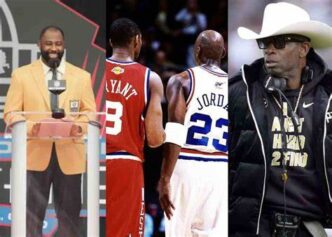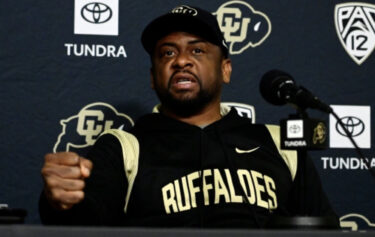Over the past year, HBCU sports have found their way into national headlines for the wrong reasons. From the Grambling player revolt to the CIAA Championship lunch fight to the annual APR issues, the spotlight hasn't been kind to these schools.
This Saturday, however, should be a different story. Not one, not two..but three players who honed their skills at historically black universities will be enshrined into the Pro Football Hall of Fame. Claude Humphrey (Tennessee State Tigers), Aeneas Williams (Southern Jaguars) and Michael Strahan (Texas Southern Tigers) will boost the total of HBCU players in the Hall to 28. That's seven more than USC and Notre Dame combined.
Unlike Williams and Strahan, Claude Humphrey had major restrictions on where he could play college football or even attend school. Born in Memphis just before the end of World War II, Humphrey was in elementary school when Brown vs. Board of Education was passed, yet he went to segregated schools during his entire academic career.
Today, Tenneessee State wouldn't have had a chance to land a player like Humphrey. But with the SEC closed to "colored' players, he joined John Merritt's talented Tiger squad that featured talented, gun-slinging Eldridge Dickey, who became the first black quarterback to be selected in the first round of the NFL Draft. Humphrey played on two undefeated teams at TSU, and was a part of a defense that allowed just 51 points in 10 games in 1965.
Though the big-time schools in The South were opposed to recruiting black players, the NFL wasn't. Humphrey went third overall to the Atlanta Falcons, where he would play the majority of his career. He is credited with 162 sacks, though the sack was not considered a statistic while he was there.
By the time Williams got to Southern, things had changed. Black players were filling rosters and starring all over the country. But Williams didn't arrive in Baton Rouge with any fanfare at all. He was just Achillies' little brother. In fact, Williams didn't even play football at Southern his first two years there.
Eventually a friend coaxed him into trying out for the team. He started off on the scout team, but by the time things were said and done, Williams was terrorizing the SWAC, picking off seven passes and getting the attention of NFL scouts. He was eventually picked in the third round by the Phoenix Cardinals in the 1991 Draft. By the time he finished his career in the NFL, he finished with nearly 800 tackles and 55 interceptions.
About the same time Williams was making a name for himself at Southern, a young pass rusher named Michael Strahan was learning how to devour quarterbacks at SWAC rival Texas Southern. Strahan had only played one year of high school football, and ended up at TSU where he followed in the footsteps of his uncle, Art.
Safe to say, by the time he left TSU, Strahan had made a name for himself. He recorded nearly 35 sacks in his last two years at TSU and was steadily climbing his way up NFL Draft boards. Despite his ridiculous production, Strahan lasted until the 40th pick of the 1993 Draft, landing with the New York Giants.
He started his career slowly, not reaching double-digit sacks until his fifth season. He would go on to shred through NFL quarterbacks much like he did in the SWAC, finishing his career with 141 sacks and going out on top with a Super Bowl win. His on field success has continued following his retirement from the gridiron, becoming a successful host of two different television programs on opposite sides of the country.
On Saturday, the eyes of the world will be on these men and the other Hall of Fame inductees. When they mention their alma maters, their words will be felt by thousands who did not attend their schools, but still feel a connection to them. It happened with Shannon Sharpe (Savannah State) and Richard Dent (Tennessee State) in 2011.
That day, for just a few hours, all who love and treasure HBCU sports will be Tigers and Jaguars.



